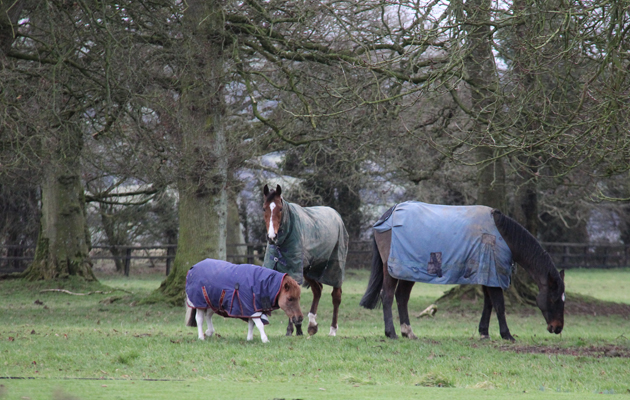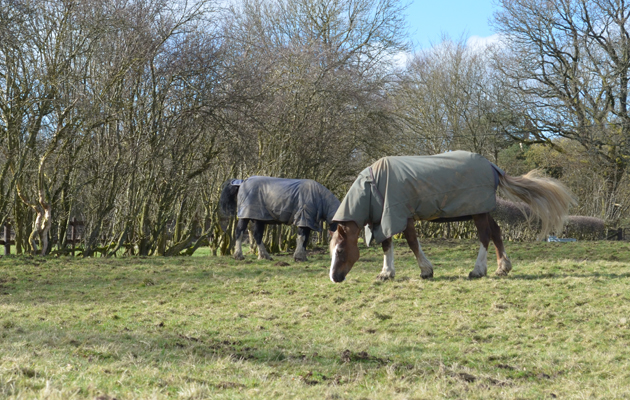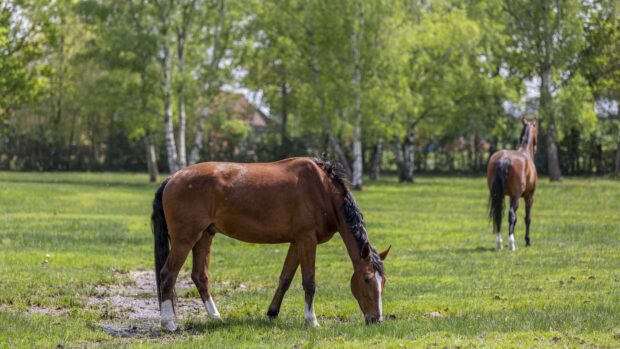Owners have been warned of the serious consequences of over-rugging their horses.
Dick Vet Equine highlighted the issue on Facebook after the practice saw an increasing number of horses being rugged unnecessarily in early autumn.
“People seem to be more and more keen on putting rugs on,” vet Tess Fordham told H&H.
“It’s worse for horses this time of year and in spring when the temperature fluctuates. People feel a bit cold in the early morning and late evening, but it’s much warmer in the middle of the day.
“In the depths of winter it isn’t such a problem as it’s cold enough for the horses not to get overheated.”
Ms Fordham said over-rugging horses can have serious consequences.
“In the short term it can lead to overheated horses,” she said. “We are called out to horses displaying signs of colic, but actually they are too hot and suffering heatstroke. This is a man-made welfare problem.
“In the long term, if an obese horse is rugged too much it will prevent them from losing weight — this puts them at massive risk of laminitis in the spring, summer and autumn. Laminitis kills and is almost entirely preventable.
“A horse should gain weight during the summer and lose weight during the winter. We mess with that process by rugging too much and don’t allow them to reset their hormone levels.
“A horse should be coming out of winter with his ribs just visible. If we don’t allow them to have this natural weight loss, their hormone levels remain high and they are much more likely to get laminitis in the spring.
“Obesity is a bigger equine welfare issue in this country than malnourishment.”
Ms Fordham advised owners to treat every horse as an individual and “not be pressured by what other people are doing”.
“Your horse may have other conditions which would make rugging more or less appropriate,” she added. “You should use your horse’s weight and body condition score as a guide, not how cold you feel in the morning.
“I recommend people body condition score so they can have a good gauge of their horse’s condition.”
How to avoid over rugging your horse
Owners should bear in mind that horses have a much wider thermoneutral zone than humans. A fit and healthy unclipped horse typically feels cold only when temperatures drop below 0°C, so when we think it’s cold outside, horses still feel quite comfortable. Clipped horses will obviously need rugs when they are not working, but may be comfortable with lighter weight rugs than many expect.
The best place to check a rugged horse’s temperature is to place your hand under the rug behind the horse’s shoulder. If the horse’s coat feels slightly damp, then the horse may well be too warm and a lighter rug should be chosen. If the horse feels cold to the touch here, then a warmer rug may be required, or you may find adding a hood will suffice.
To help owners decide which type of horse rug to use, check out this useful horse rugging guide, which give guidelines as to when your horse might benefit from wearing a stable rug. It also includes advice on how to choose between a lightweight turnout rug, a medium weight turnout rug and a heavyweight turnout rug.
You may also be interested in…

Which rug should I put on my horse? H&H’s helpful guide to help you decide

‘Think before you rug’: winter welfare plea to horse owners

Carole Mortimer: Over-rugging is a recipe for disaster *H&H VIP*
H&H's sport horse breeding columnist reminds owners that their horses "are not lap dogs"

The summer rugging dilemma — how to keep horses show clean but cool
How can you keep your horse clean without them overheating?





